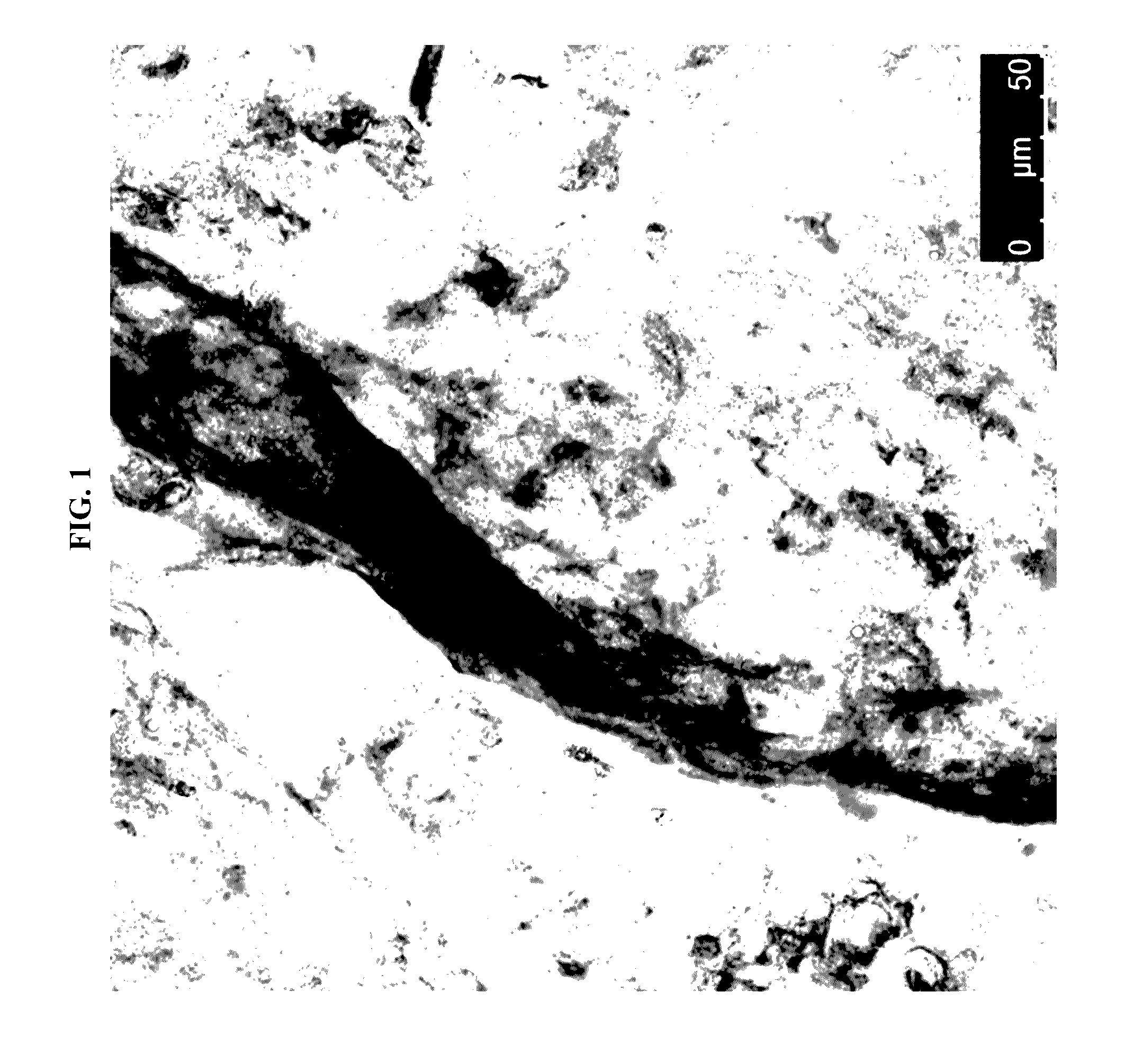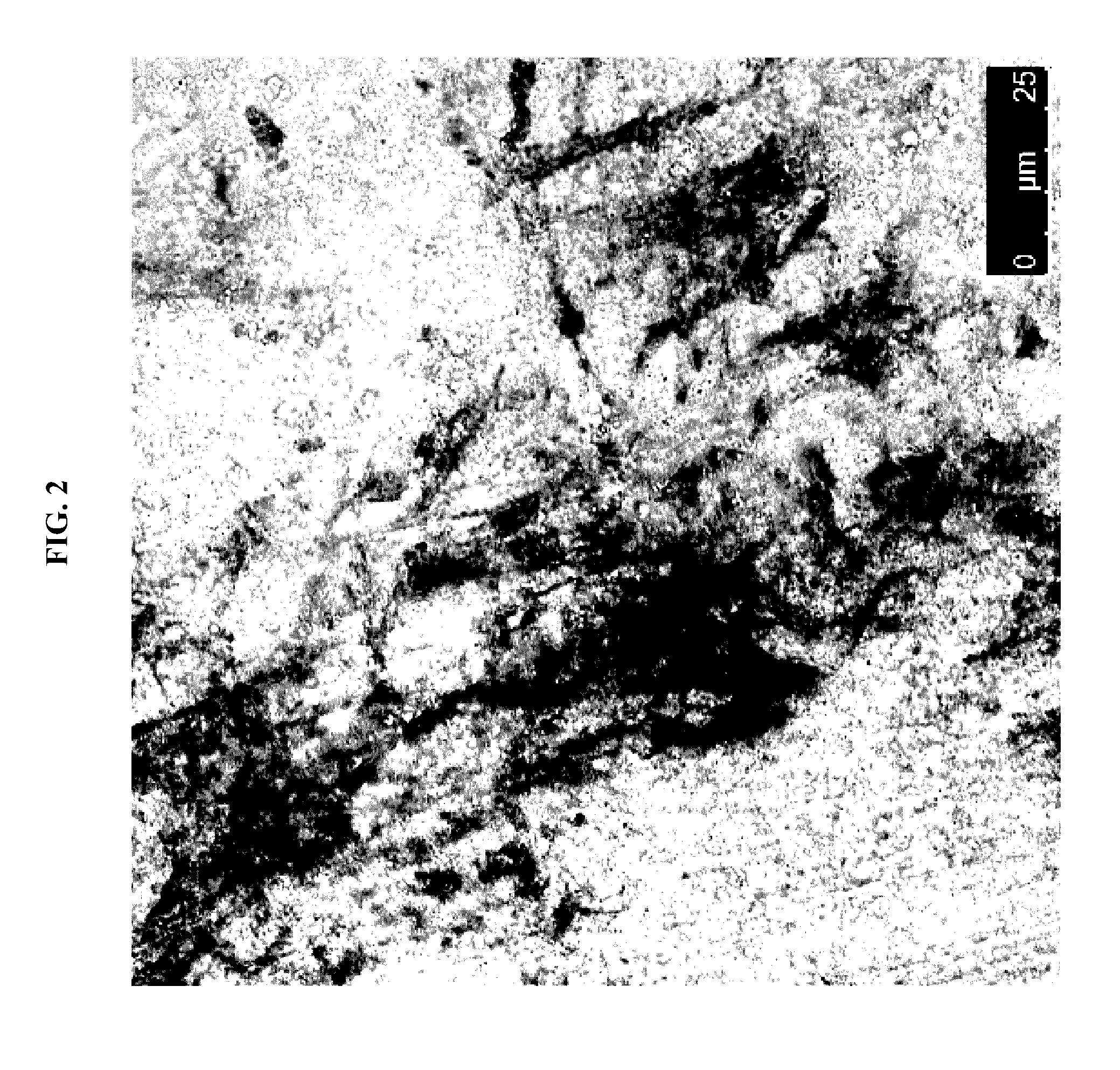Cardiac fibroblast-derived extracellular matrix and injectable formulations thereof for treatment of ischemic disease or injury
a technology of fibroblasts and extracellular matrix, which is applied in the direction of peptide/protein ingredients, metabolism disorders, prosthesis, etc., can solve the problems of cardiac ischemia, shortening the amount of oxygen and glucose needed, and tissue damage or death
- Summary
- Abstract
- Description
- Claims
- Application Information
AI Technical Summary
Benefits of technology
Problems solved by technology
Method used
Image
Examples
example 1
Injectable Formulations of Engineered Cardiac Fibroblast Derived Extracellular Matrix
[0084]In this Example, we generated engineered ECM from cardiac fibroblasts, decellularized the engineered ECM, and fragmented the engineered ECM to make an injectable formulation of engineered CF-ECM. The resulting formulation was successfully delivered into a pig heart via catheter injection. Accordingly, this Example demonstrates an alternative composition of the engineered CF-ECM that can be delivered to the heart using minimally invasive non-surgical methods. Furthermore, the fragmented formulation greatly increases the surface area of the delivered engineered CF-ECM, resulting in enhanced benefits for both the previously disclosed cardiac disease or injury applications and in the ischemic wound applications first disclosed in this application.
[0085]Methods and Results
[0086]Engineered Cardiac Fibroblast Derived Extracellular Matrix (CF-ECM).
[0087]Engineered fibroblast derived extracellular matr...
example 2
Engineered CF-ECM “Patch” Shows Therapeutic Effects in a Rat Myocardial Infarction Model, Even in the Absence of Seeded Cells
[0101]Engineered CF-ECM were previously disclosed as a platform for delivering therapeutic cells to damaged or diseases cardiac tissue (see, e.g., U.S. Pat. No. 8,802,144; Schmuck, E. G., et al., Cardiovasc Eng Technol 5(1) (2014): 119-131, both of which are incorporated by reference herein). In this Example, we report the surprising finding that the engineered CF-ECM “patch” has therapeutic effects even in the absence of therapeutic cells, as demonstrated in a rat model of myocardial infarction (MI).
[0102]Methods and Results
[0103]Engineered Cardiac Fibroblast Derived Extracellular Matrix (CF-ECM).
[0104]Engineered fibroblast derived extracellular matrix was manufactured using methods that were previously described (see U.S. Pat. No. 8,802,144 and Schmuck, E. G., et al., Cardiovasc Eng Technol 5(1) (2014): 119-131, both of which are incorporated by reference he...
example 3
Engineered CF-ECM “Patch” Shows Therapeutic Effects in a Mouse Limb Ischemia Model, Both in the Presence or Absence of Seeded Cells
[0113]Engineered CF-ECM were previously disclosed as a platform for delivering therapeutic cells to damaged or diseases cardiac tissue (see, e.g., U.S. Pat. No. 8,802,144; Schmuck, E. G., et al., Cardiovasc Eng Technol 5(1) (2014): 119-131, both of which are incorporated by reference herein). In this Example, we report the surprising finding that the engineered CF-ECM “patch” has therapeutic effects in a model of ischemic limb injury, both with or without therapeutic cells seeded onto the patch.
[0114]Methods
[0115]Fibroblast Derived Extracellular Matrix.
[0116]Engineered cardiac fibroblast derived extracellular matrix (CF-ECM) was manufactured using methods that were previously described (see U.S. Pat. No. 8,802,144 and Schmuck, E. G., et al., Cardiovasc Eng Technol 5(1) (2014): 119-131, both of which are incorporated by reference herein). Briefly, male Le...
PUM
| Property | Measurement | Unit |
|---|---|---|
| thickness | aaaaa | aaaaa |
| flow area | aaaaa | aaaaa |
| inner diameter | aaaaa | aaaaa |
Abstract
Description
Claims
Application Information
 Login to View More
Login to View More - R&D
- Intellectual Property
- Life Sciences
- Materials
- Tech Scout
- Unparalleled Data Quality
- Higher Quality Content
- 60% Fewer Hallucinations
Browse by: Latest US Patents, China's latest patents, Technical Efficacy Thesaurus, Application Domain, Technology Topic, Popular Technical Reports.
© 2025 PatSnap. All rights reserved.Legal|Privacy policy|Modern Slavery Act Transparency Statement|Sitemap|About US| Contact US: help@patsnap.com



